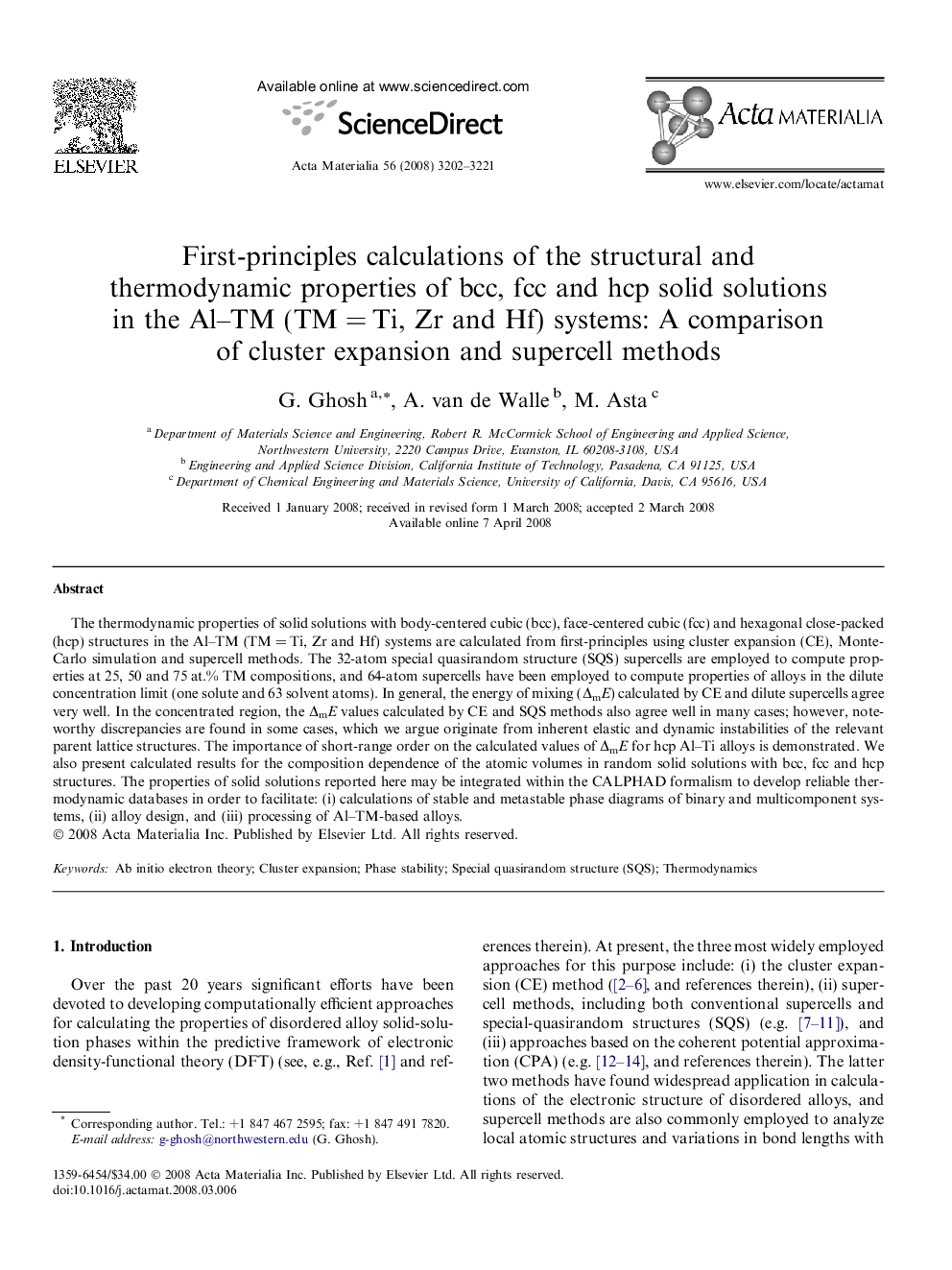| Article ID | Journal | Published Year | Pages | File Type |
|---|---|---|---|---|
| 1449077 | Acta Materialia | 2008 | 20 Pages |
The thermodynamic properties of solid solutions with body-centered cubic (bcc), face-centered cubic (fcc) and hexagonal close-packed (hcp) structures in the Al–TM (TM = Ti, Zr and Hf) systems are calculated from first-principles using cluster expansion (CE), Monte-Carlo simulation and supercell methods. The 32-atom special quasirandom structure (SQS) supercells are employed to compute properties at 25, 50 and 75 at.% TM compositions, and 64-atom supercells have been employed to compute properties of alloys in the dilute concentration limit (one solute and 63 solvent atoms). In general, the energy of mixing (ΔmE) calculated by CE and dilute supercells agree very well. In the concentrated region, the ΔmE values calculated by CE and SQS methods also agree well in many cases; however, noteworthy discrepancies are found in some cases, which we argue originate from inherent elastic and dynamic instabilities of the relevant parent lattice structures. The importance of short-range order on the calculated values of ΔmE for hcp Al–Ti alloys is demonstrated. We also present calculated results for the composition dependence of the atomic volumes in random solid solutions with bcc, fcc and hcp structures. The properties of solid solutions reported here may be integrated within the CALPHAD formalism to develop reliable thermodynamic databases in order to facilitate: (i) calculations of stable and metastable phase diagrams of binary and multicomponent systems, (ii) alloy design, and (iii) processing of Al–TM-based alloys.
